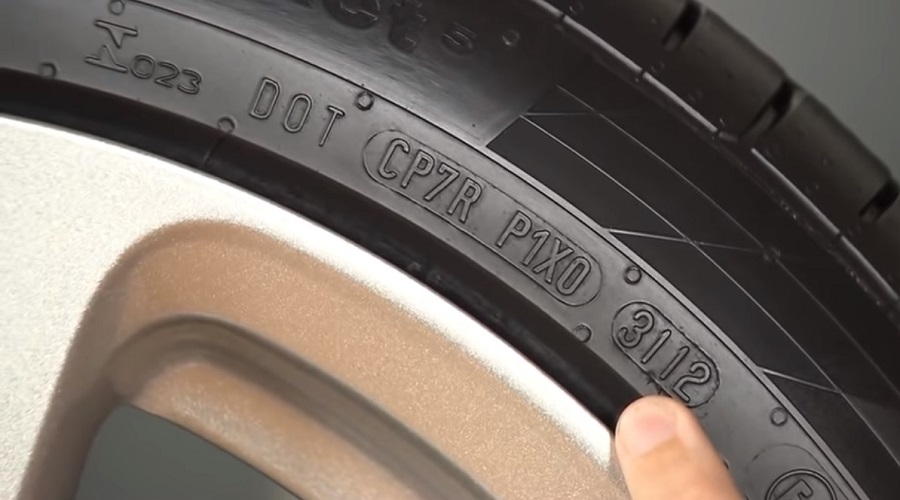
The average lifespan of a tire varies for everyone depending on their driving habits, how often a vehicle is driven, and more. However, tire aging starts from the day it is manufactured, and that’s how tire manufacturing data codes come into play.
No matter if you’re a car lover or just want to ensure the safety of passengers, you must decode the long serial numbers written on the sidewall of tires. Every number conveys a unique parameter, such as when the tire was manufactured, its size, plant manufacturing, and more.
Want to find out more about the Tire Manufacture Date Code? This guide will explore how to read date code on tires and how important it is to consider when making a decision. So let’s get started without further ado!
Tire Manufacture Date Code, simply known as Tire Date Code, is a value containing alphabets or numbers written on the sidewalls of a tire. This code contains crucial information such as the manufacturing date as well as the current life of the tire. All you need to do is find the Tire Identification Number (TIN), which consists of 13 digits and represents the Tire Date Code in its last four digits.
The tire’s age value directly relates to the safety of the passengers and vehicle, especially when driving at a higher speed on highways. Since tires are made of rubber and other composites containing organic and synthetic materials, they tend to deteriorate with time. Moreover, this rubber deterioration can also double if exposed to higher friction and temperature than it is designed for. After which, a tire can burst and cause havoc.
For this reason, it is extremely important to understand that tires comes with a certain age limit. One must always check the tire date codes to find the manufacturing date as well as the current age value to arrange for a replacement on time. The NHTSA reports suggested that the vehicle’s tire should be changed within a span of 4 to 6 years, whether driven or not.
Tire Identification Number is a lengthy code made up of both numbers and letters. It displays the tire size, construction type, manufacturer, and other details in addition to the manufacturing date. Tire identification number (TIN) comes in two other categories: 7–12 digits and 13 digits.
The first two characters will be the manufacturer’s plant code, while the next one or two characters will represent the tire size code. After that, the next group of symbols will represent the construction type. Finally, the last four digits correspond to the Tire Date Code. In these four digits, the first two letters correspond to week, and the last two correspond to years.
In the thirteen-digit numerical code, the first three digits correspond to the plant code, while the next group of six characters will represent the tire’s type and manufacturer. Similarly, the last four digits represent the Tire Date Code in WWYY format.
Tire DOT Code is the special number designated by the Department of Transportation to each tire to track the manufacturing or production date for a timely safety recall. The number starts with the “Letters DOT” and then comes the four letters or numbers that the Transportation Department can identify. The last four digits of DOT represent the week and year.
Now that we’re aware of the Tire Date Code and when it can be seen on the tire. Once read, you’ll have to decode it to find the manufacturing month. It’ll not represent the exact date but the week of the manufacturing year.
An example of a Tire Date Code is 2119, which shows that the tire was manufactured in the 21st week of 2019.
Writing a three-digit number on the tire’s side wall was the norm that the Tire Date Code adhered to for tires made before 2000. The last digit represents the year of production, while the first two represent the weeks. But confusion was brought about by this method. The 42nd week of 1989 or 1999, for instance, is represented by the number 429.
Tires manufactured after 2000 followed a newer version of Tire Date Code or DOT number comprising four digits. To avoid confusion in the later years, the 2 numbers are then devoted for week and year. For example, the number 2519 would represent the 25th week of the year 2019.
The average age of a tire is not the same for everyone! The tire’s age changes due to multiple factors. For example, driving on a road with potholes can crack the tires way too soon! Thus, it varies with the number of miles, road conditions, driving habits, and more. A tire will normally last from 60,000-75,000 miles, or 4-5 years.
You can always go the extra mile to protect your tires and increase the life span by reducing wear and tear. Here are some quick tips to follow:
And that’s all. We hope our detailed guide about the tire Date Code has cleared all the confusion! Now you know how to read date code on tires. As said above, understanding the tire manufacture date code at the end of the tire identification number is necessary to arrange for tire replacement in the future and to offer a safe travel experience. Not to forget, the tire’s manufacturing date can be used to determine the tire’s average age.